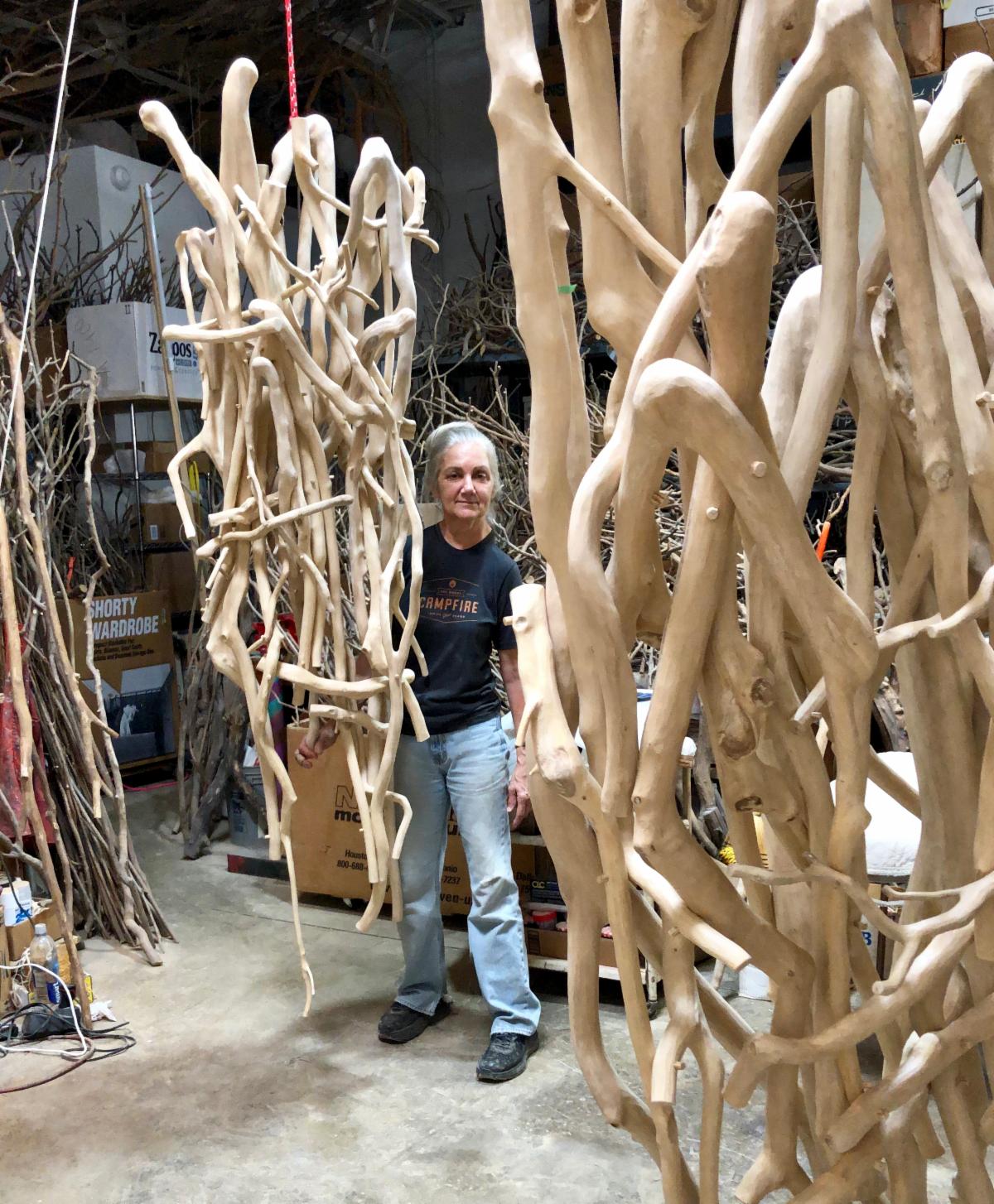SUPER NATURE
by Kendall Morgan
Texan artist Sherry Owens builds an engrossing universe from crepe myrtle and bronze.
In the hands of Texan artist Sherry Owens, a seemingly banal material—crepe myrtle branches—is transformed from natural debris into parables of mythology, ecology, and storytelling.
Currently showing Tied to this World (on view through October 12 at Cris Worley Fine Arts), Owens carves and composes her chosen material—sometimes dying it or coating it in wax, sometimes casting it in bronze, or adorning it with fairy-like webs.
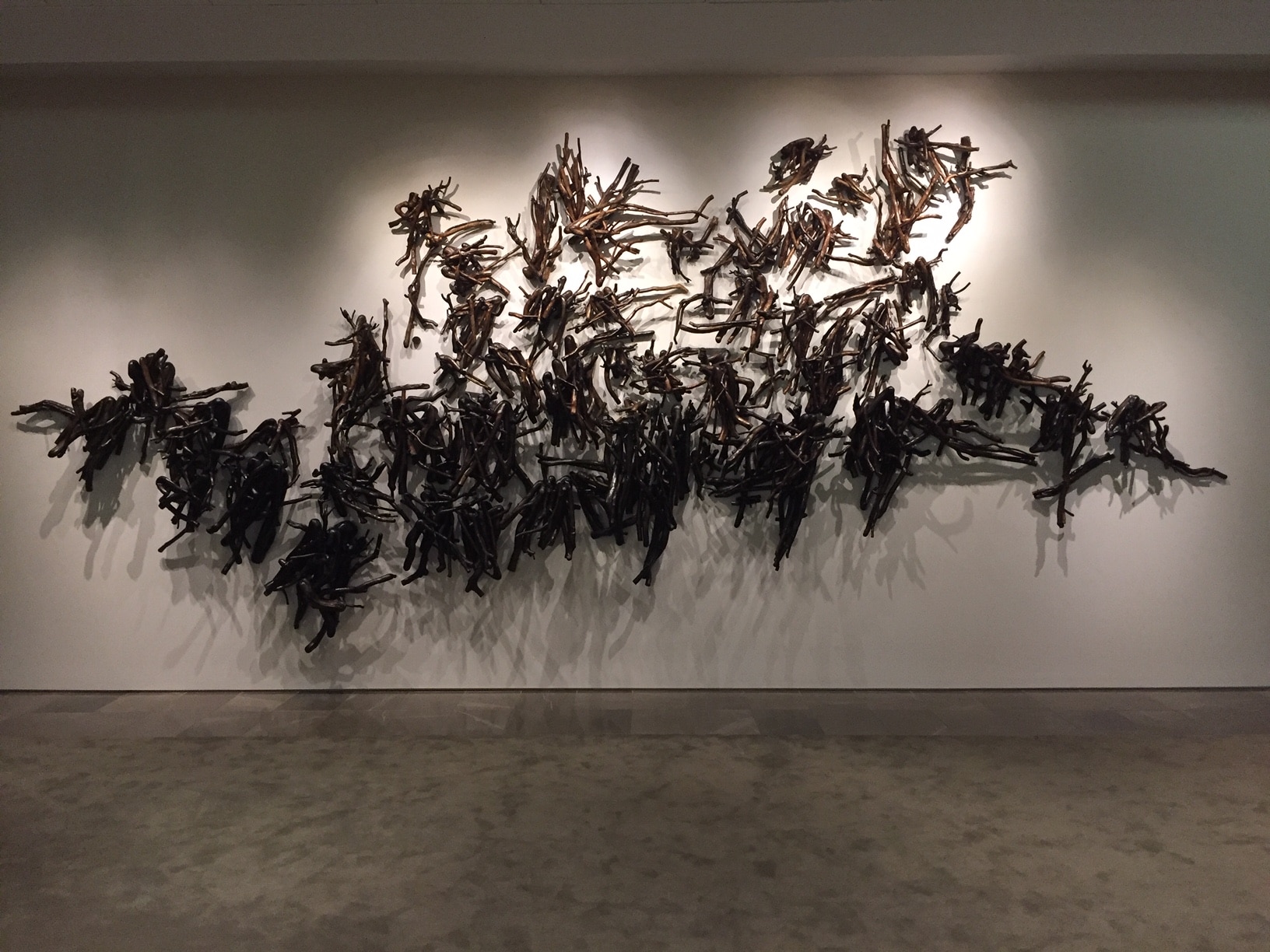
Born in East Texas, Owens originally studied elementary education at Southern Methodist University before being drawn to arts education. She taught at an alternative high school post-graduation in Dallas in the early 1970s for a few years before embracing a full-time practice.
Initially concentrating on tapestries and textiles, Owens spent over a decade working with wool and silk but felt an undeniable pull to use completely new material.
“I was working in clay for a little while, but I took it upon myself to try these different avenues,” Owens recalls. “I was working on a piece that had different kinds of material, and I had some crepe myrtle trees in my yard and they just kind of started to stick out. They have a very short grain, and when you carve them, they splinter. But crepe myrtle is so beautiful and sensual in the way it grows.“
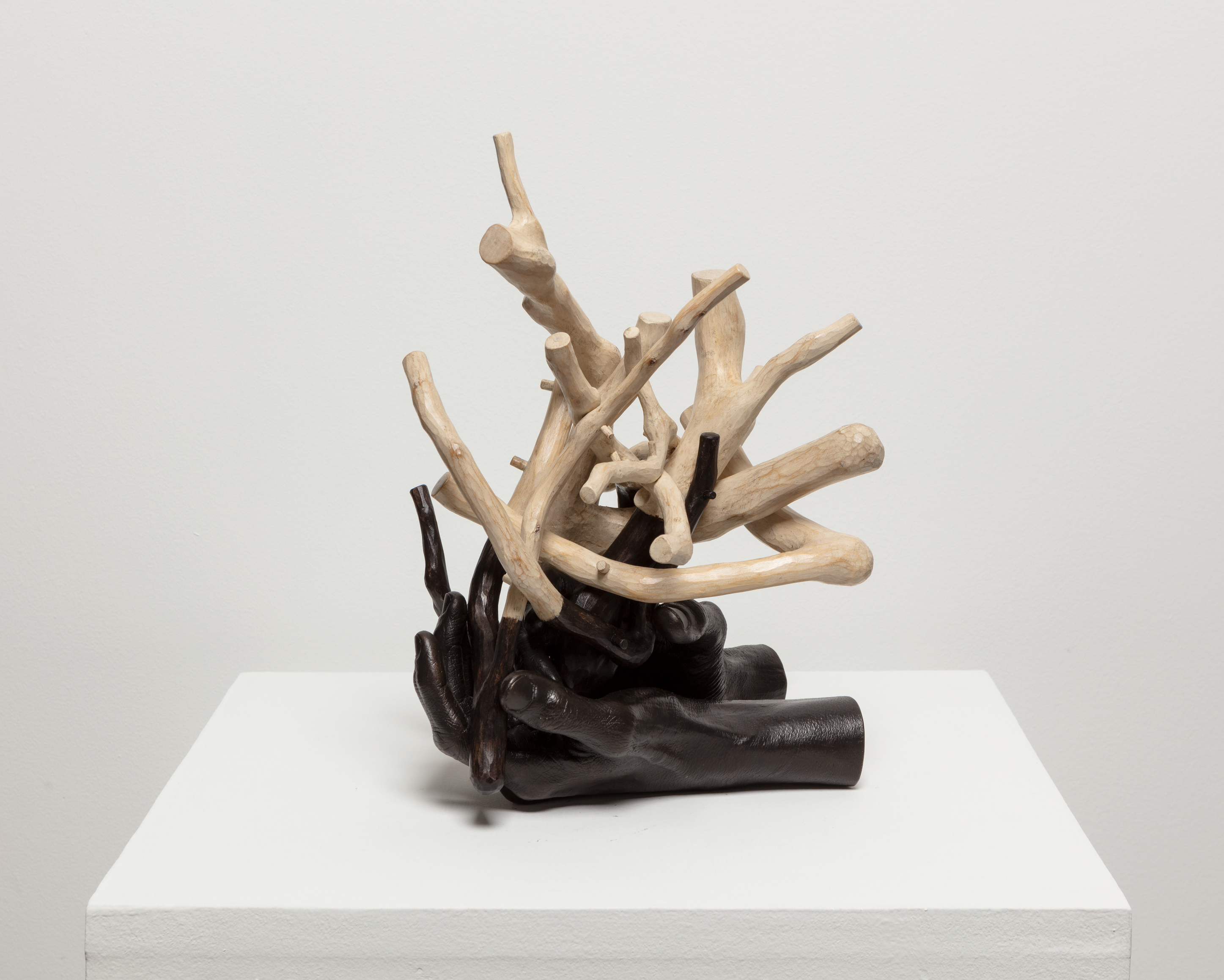
Now 32 years in, her love affair with these knotty branches shows no sign of abating. Because pruning happens in January and February, Owens began each year driving around in her truck to source raw materials. Now that her reputation precedes her, architects and homeowners seek her out when it’s time to trim. The artist prides herself on using every part of the tree—shoots that come up in the springtime are repurposed as pegs to bind branches together, and even roots find their place in her sculptures.
Owen’s studio is a magical world built of sticks, with stacks of branches filling the floors and suspended from the ceiling in maze-like groupings.
“It’s like walking into a big drawing,” Owens laughs. “There are lines everywhere, and you have to dance sideways in the studio to get through the path!“
Owens work has drawn her acclaim all across the state—including exhibits at San Antonio’s Blue Star Art Museum, the San Angelo Museum of Fine Arts and Austin’s UMLAUF Sculpture Garden and museum (with fellow artist Art Shirer).
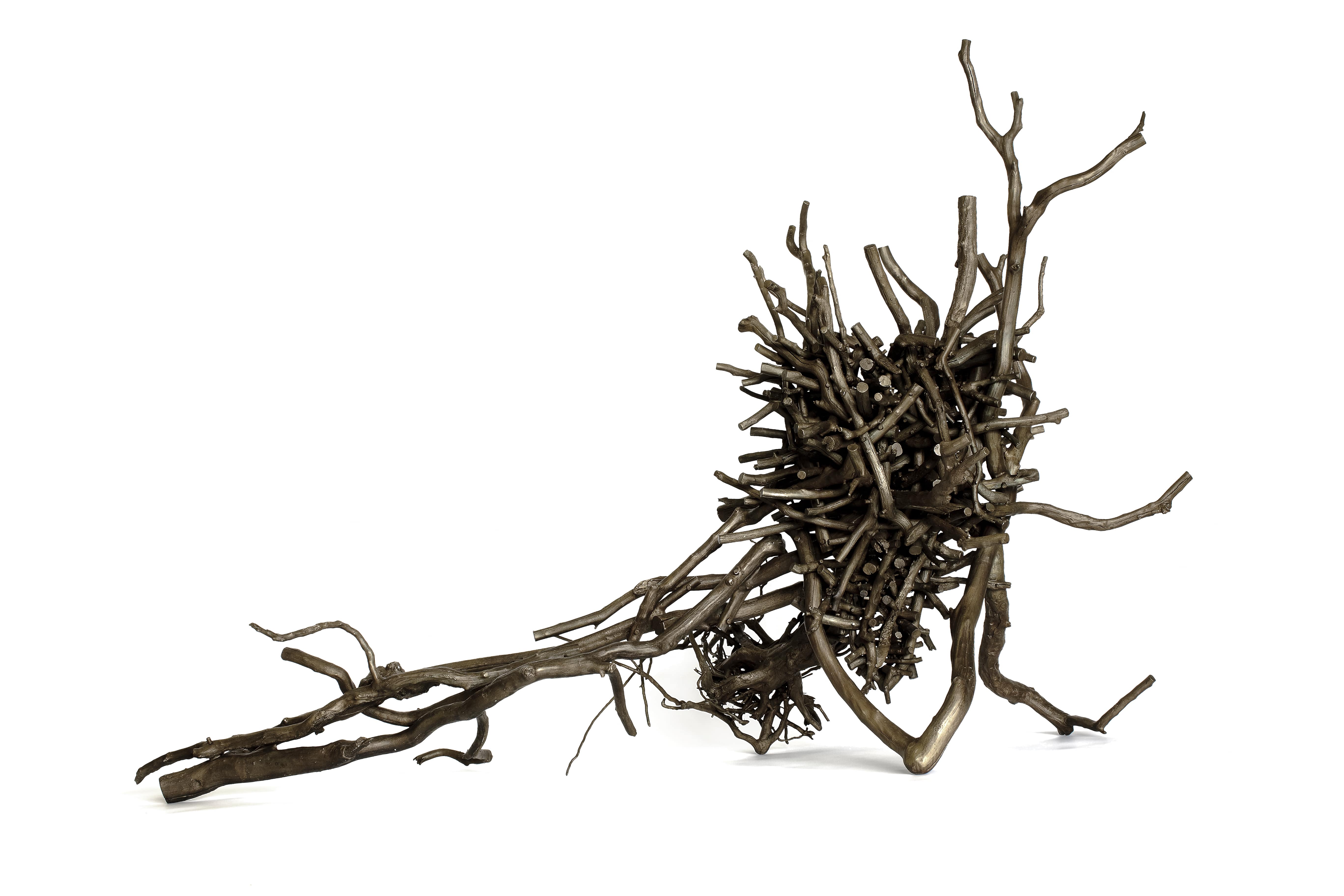
But seeing her work in a smaller space such as Worley’s gallery allows one to unpack its meaning more freely. What may at first resemble a tangle of twigs always has a much greater story the careful viewer can discern. The Embrace of Heaven and Earth with its suspended clusters of bronze branches explores the artist’s belief in other unseen worlds. Owen’s “spiderweb” series cast in bronze were inspired by enchanting webs coated with hoarfrost she viewed when working at an artist’s residency in Germany.
The nine-foot-tall Awakening the Spirit crafted of burned wood in a steel base refers to the evolution of a tree after a forest fire as it enriches the soil to grow again. Natural themes and concern for the planet reoccur throughout most of Owen’s work.
“My work is about pulling those
different lines together to transform
a pile of debris by the side of the
road into another meaning.”
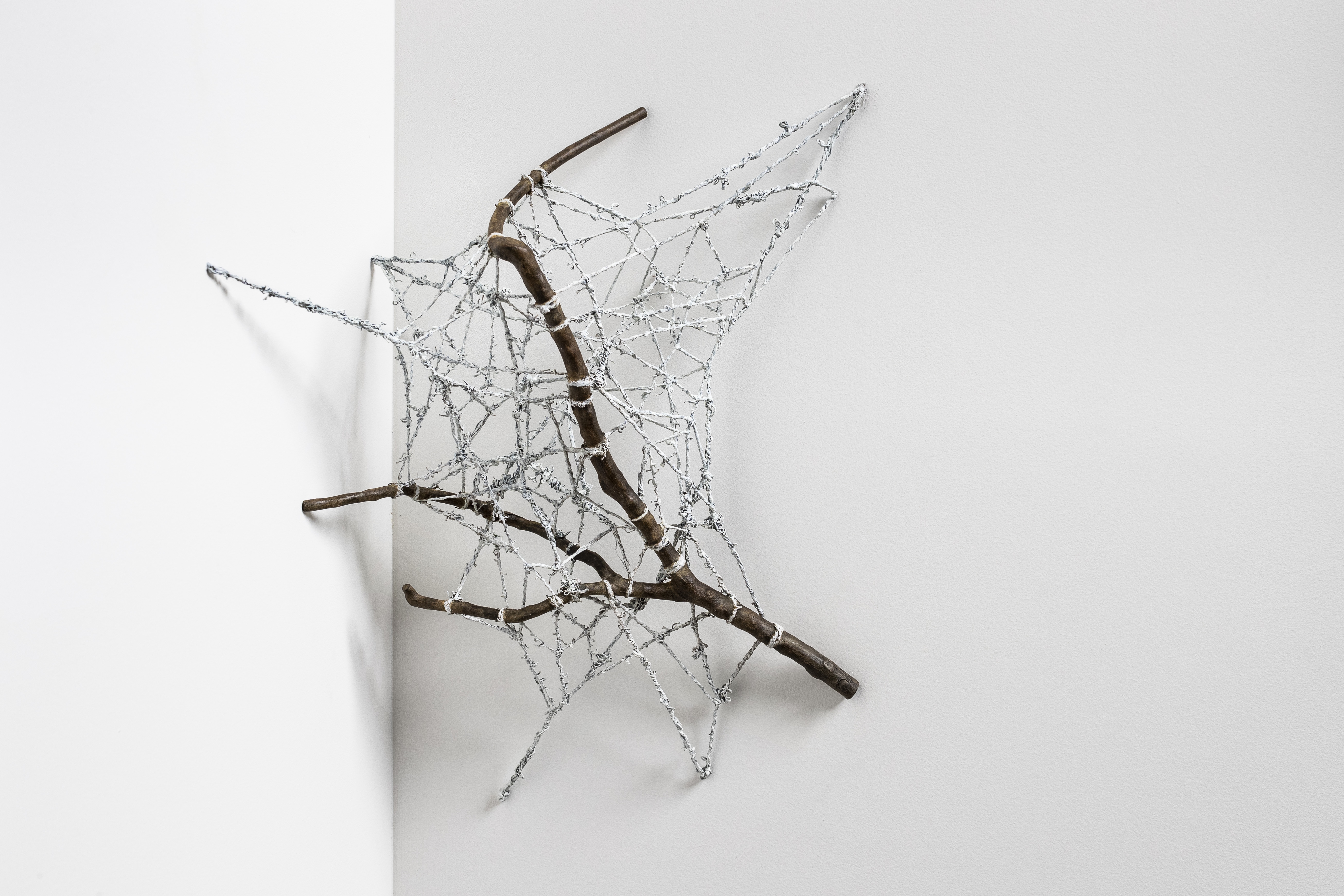
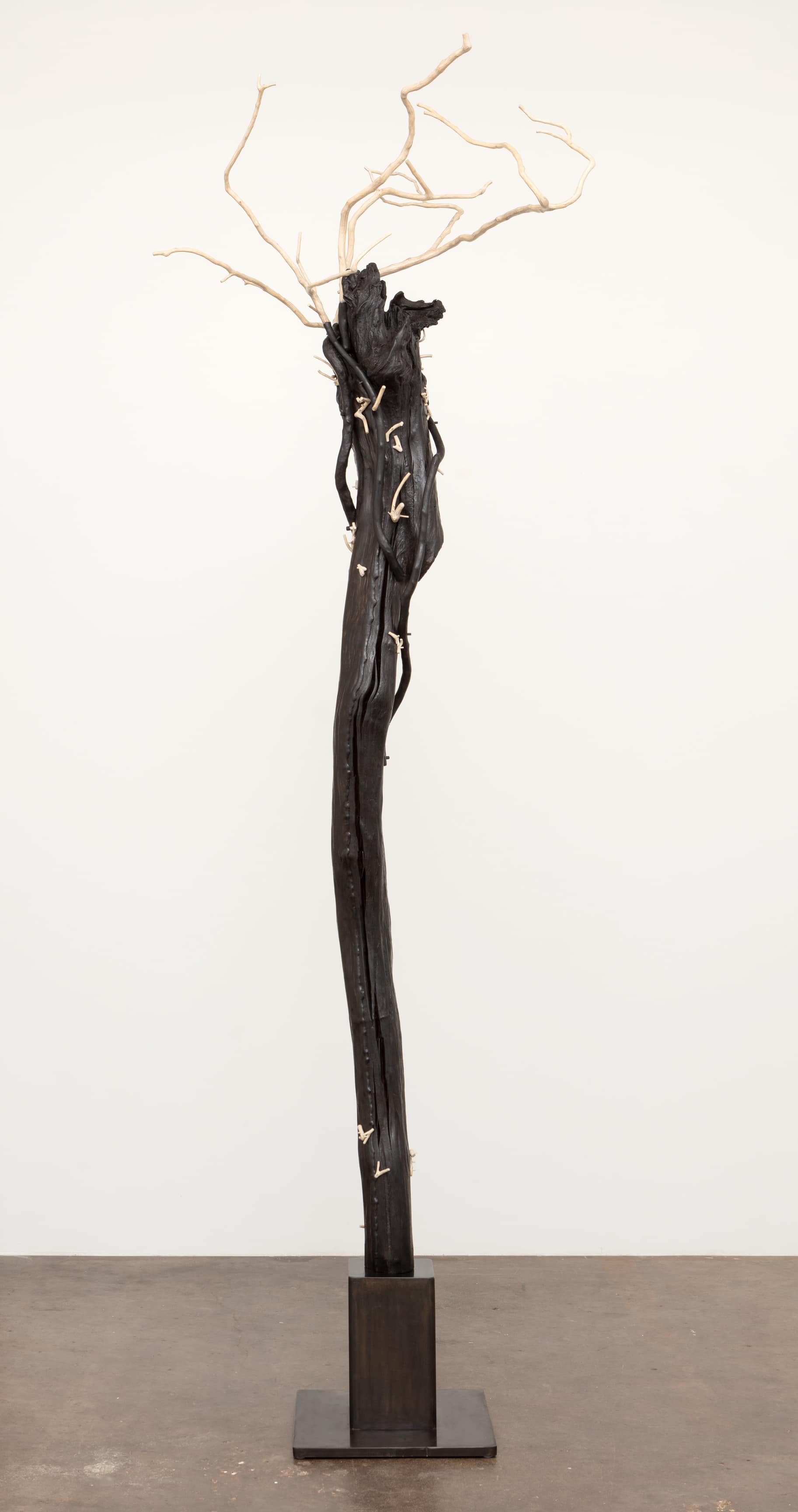
“Some people ask me why I make art, and it’s a need to do something with my hands, but I think art relates to what’s happening in the world. Artists are messengers—we help alert people to what’s happening. If we find things are important and can help people stop and what’s really happening, it helps the community as a whole.”
Although her themes may evolve over the years, Owens intends to stay faithful to her chosen material.
“People keep saying, ‘Aren’t you ready to move on?’ But I’m not done. I’m exploring it in all kinds of different ways. I really love the way it grows, the way it twists into space and takes up volume. My favorite time to look up at the crepe myrtle tree is winter—the blossoms are beautiful, but I’m into the structure of the tree. My work is about pulling those different lines together to transform a pile of debris by the side of the road into another meaning.”
all photos courtesy of cris worley fine arts

